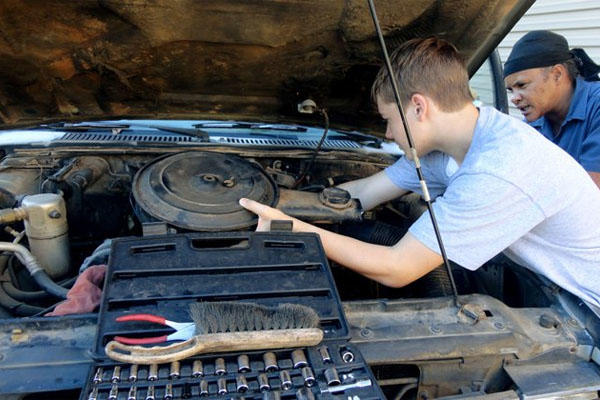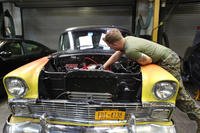I'd never been able to follow the "easy" instructions to put my kids' toys together until I learned the technique that follows. Then I was able to get at my brakes to check them and even lubricate the wheel bearings and put everything back together again! The bonus is that this procedure works for anything that you need to take apart and put back together again -- flat tires, toasters, bicycles, you name it.
Road Rule: Never, ever do a job in a hurry.
Allow yourself plenty of time. If things get rough, have some water or a cup of coffee. You may get a whole new perspective when you go back to work. Limit distractions: Turn on your answering machine or take the phone off the hook, keep the kids and the dog away, and relax. If you hit a snag, sit quietly and think about it -- don't panic. If the parts fit together before, they'll fittogether again.
Follow these instructions, breathing slowly and deeply:
1. Lay a clean, lint-free rag down on a flat surface, near enough to reachwithout having to get up or walk to it.
You'll lay each part on this rag as you remove it. Consequently, the rag shouldn't be in an area where oil or dust or anything else can fall on it and foul up the parts. If you plan to use something that blasts air for cleaning purposes, leave enough of the rag uncluttered to fold it over the parts resting on it.
2. Before you remove each part, stop and ask yourself the following questions, and if you're worried about forgetting your answers, make notes:
• What is this thing?
• What does it do?
• How does it do it?
• Why is it made the way it is?
• How tightly is it screwed on (or fastened down)?
Caution: Most amateurs put things back very tightly, in hopes that the part won't fly off. But some things, like bolts that hold gaskets in place, shouldn't be tightened too securely because, for example, the bolt threads could be stripped or the gasket could be squeezed out of shape, allowing whatever it's holding in to get out. It's helpful to make notes about how hard each thing was to remove. "Don't over-tighten" or "Be sure it's secure." Some parts require exact torque specifications, but we don't deal with them here.
3. As you remove each part, lay it down on the rag in clockwise order, with each part pointing in the direction it was in before you removed it.
This is the key to the whole system. When you're ready to reassemble things, the placement and direction of each part tells you when to put it back and how it was oriented.
4. If you're making notes, assign each part a number indicating the order in which you removed it -- Part #1, Part #2, and so on.
You can even put numbers on the parts with masking tape if you're afraid that the rag may be moved accidentally. Also, note what each part was attached to; for example, "Part #6: Hook at end of arm on left hooks onto knob to right of Part #7." Add a sketch if it helps.
If you work systematically and understand the function of each part, you won't be left with what seem to be extra nuts and bolts at the end of the job.
5. When you're ready to reassemble everything, begin with the last part you removed, and proceed counterclockwise through the parts on the rag. If you've numbered the parts, they should go on in reverse order.
Now you're ready to tackle the first job that will give you a chance to apply this technique: Using a jack and changing a tire. You may never need to do it, but if you're stuck with the need to change a flat, you'd better know how.
From Auto Repair for Dummies, copyright © 2009 by Wiley Publishing, Inc., Indianapolis, Indiana. Used by arrangement with John Wiley & Sons, Inc.
Keep Your Car Ready to Go
Make sure your tires are ready to roll when you are. Take advantage of Discount Tire's military discount.











